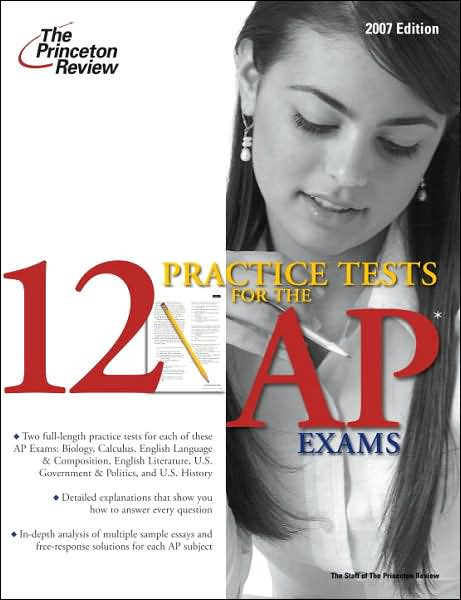AP Exams
 A few weeks ago, the 6th Annual AP Report to the Nation was published by the College Board. The report makes reference to the growing number of Hispanic students successfully completing AP Exams, in the period from 2004 to 2009. Florida, a state with one of the largest Hispanic populations in the country, had especially positive results. 22.2 percent of Florida’s graduating students in 2009 were Hispanics as were 27.6 percent of the students that took the AP test. Florida also managed to level the gap in scores between Hispanics and other students, raising the average score among Hispanic students to the 3-5 level in 2009. In a brief 5 year period, Hispanic students from Florida have closed the gap in equity and excellence in respect to other students.
A few weeks ago, the 6th Annual AP Report to the Nation was published by the College Board. The report makes reference to the growing number of Hispanic students successfully completing AP Exams, in the period from 2004 to 2009. Florida, a state with one of the largest Hispanic populations in the country, had especially positive results. 22.2 percent of Florida’s graduating students in 2009 were Hispanics as were 27.6 percent of the students that took the AP test. Florida also managed to level the gap in scores between Hispanics and other students, raising the average score among Hispanic students to the 3-5 level in 2009. In a brief 5 year period, Hispanic students from Florida have closed the gap in equity and excellence in respect to other students.
It’s interesting to note that now, more than ever, Hispanics that graduate from public high schools participate in and successfully complete coursework in the AP Advanced Placement Program. Hispanic students represent 15.9 percent of 2009 public high school graduates and 15.5 percent of the total students who take the AP exam at a national level.

With its ample supply of conservative politicians, and its brilliant results in education confirmed by the College Board report, Florida is a noteworthy example of the success of the AP program with Hispanics. In this state are found 7 of the 15 schools recognized for leadership, and large numbers of graduating Hispanic and African-American high school students in addition to the success of the afore mentioned minority students in certain AP courses. Apart from Florida, the report also congratulates schools in California, Georgia, Texas, Illinois, Maryland and Michigan for their improvements in these areas.
Figuring among the states who have most improved their educational levels, Florida’s well-deserved positive results in the AP exams, as well as higher percentage of students enrolled and successfully completing AP courses are the result of serious efforts to improve the education available to all Florida students.
AP is an advanced placement program directed by the College Board and that allows students to complete university level coursework for university or high school credit. Through more than 30 university level courses that end with a comprehensive exam, the AP program provides those students who are adequately motivated and academically prepared with the opportunity to obtain university credits, high school credits, advanced placement credits, or all three.
Additionally, students that complete AP courses demonstrate to university admission personnel that they are making their best effort and searching out the most rigorous coursework available. Professors from the best universities in the country evaluate and approve the study plans for AP teachers. AP Exams are developed and evaluated by university professors with experience in AP. Possible courses include history, advanced mathematics, and languages, among other disciplines, and more than 3,600 universities worldwide including 90 percent of American 4 year universities consider AP exams results for transferable university credits, advanced placement at university, or both. In 2009, students from more than 17,000 public and private schools worldwide took the AP exams. Since 2004, then the number of 12th grade Hispanic students that took the AP exam at some point during high school rose 75.4 percent. In 2004, 70,648 graduating Hispanic high school students had taken at least one AP Exam, while in 2009 123,882 graduating Hispanics had taken one or more AP Exams.

This is inspiring information because the number of Hispanics passing AP exams at some point during high school has increased. Around 47,184 Hispanic students graduating from high school in 2004 received scores of 3 or above compared to the 68,377 (55.2%) of students that achieved similar scores in 2009. 14.3 percent of all students that obtain a score of 3 of more on AP exams are now Hispanics.
Another very revealing piece of information included in the report is the growing number of low-income students that participate in and successfully complete AP programs. 18.9 percent of high school students graduating in 2009 that had taken an AP exam were from low-income families; this represents an increase from 2008’s 17 percent and 2004’s 13.7 percent. Additionally, these low-income students made up 14.7 percent of 2009 high school graduates who had successfully completed one or more AP courses.

The academic and university failure of Hispanics is often mentioned and it’s true, it’s a challenge that exists and must be faced, but it’s also positive to note the real successes and advances made by boys and girls who have made an effort and have overcome serious obstacles in the path to obtaining a quality education.
As result of the combined efforts of dedicated professors nationwide, and hard-working students, AP classes increasingly reflect the diversity of American students and are reducing barriers and inequalities that still exist, making it possible for students to achieve a level of academic excellence that sufficiently prepares them for the challenges of the AP program and University.
The United States is a current, real-life example of how good education can be made available to all citizens, distributing equal opportunities for progress to everyone. Enrolling in the AP program better prepares students for standard high school subjects, and gives them the chance to obtain extra university level credits.
The program reaches out to all students: undocumented students, those students without Social Security and those students with limited economic resources, all of the above have access to AP courses. If the student is lower income, Social Security isn’t required to take the test. According to federal standards, these students also qualify to receive exceptions by quotas, free lunch and reduced prices. Students need only present the required grades in the course to opt to take the AP test.
Research has demonstrated that students that are successful in AP exams are more likely to obtain a university degree in four years and in general are better prepared for university studies than those who don’t participate in the program.
This is important, at an academic level and an economic level. For these students’ families, the AP exam represents a savings of thousands of dollars in university fees. Academically, realizing AP coursework is an added advantage in the university admission process, as universities look favorably upon those students who choose to pursue more demanding coursework.
In summary, AP courses are an essential contribution in the campaign to increase educational opportunities for Hispanic students and put them on the path to university success.











